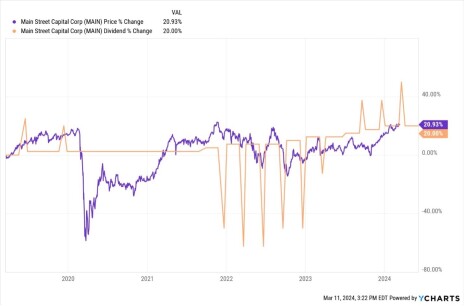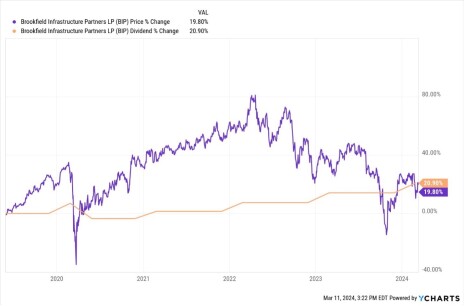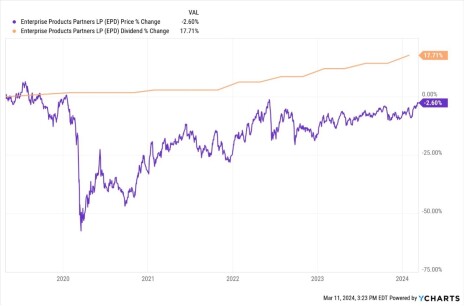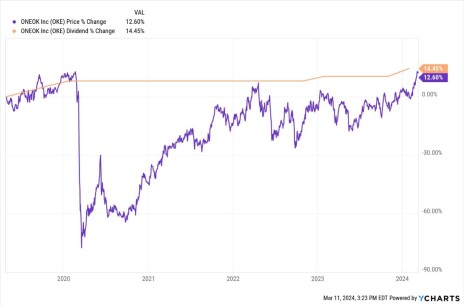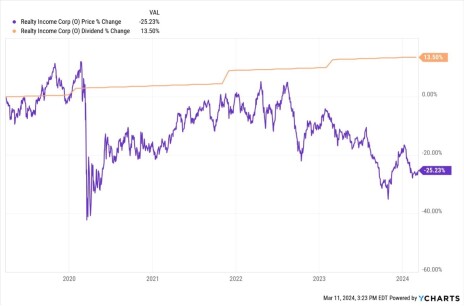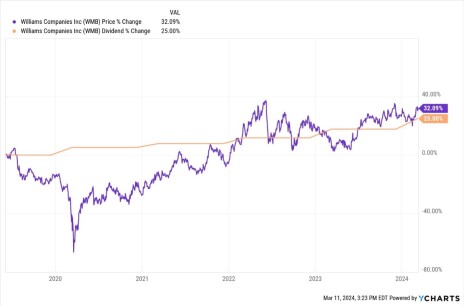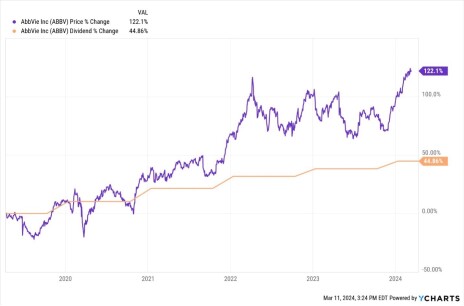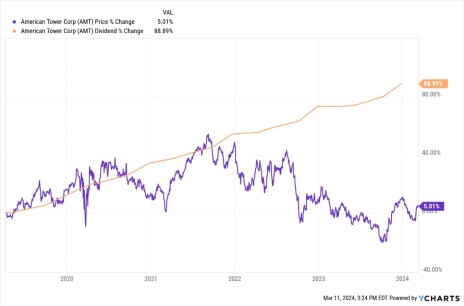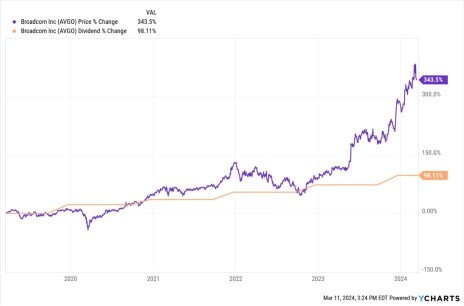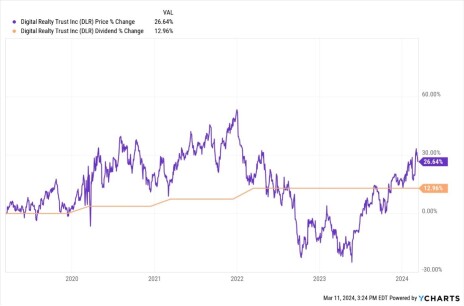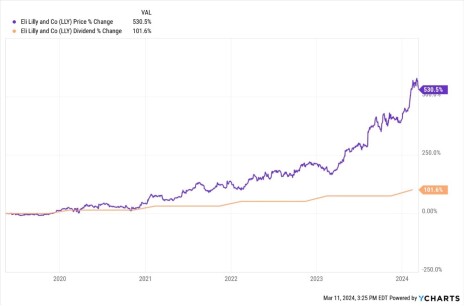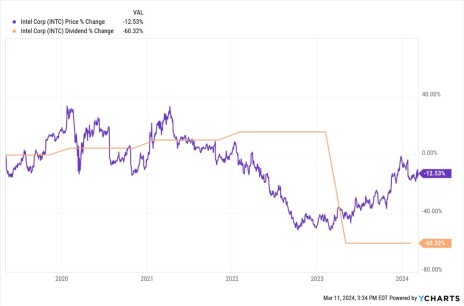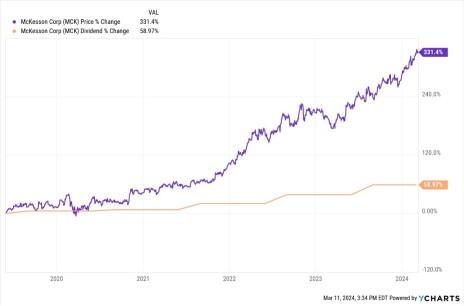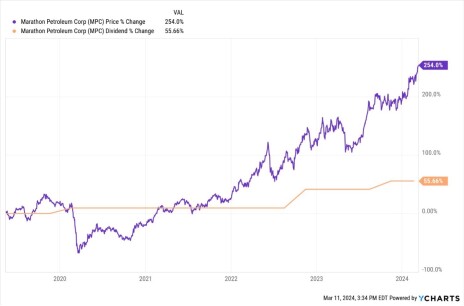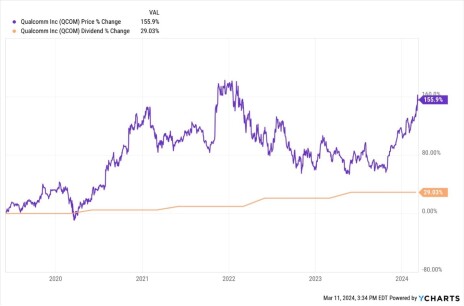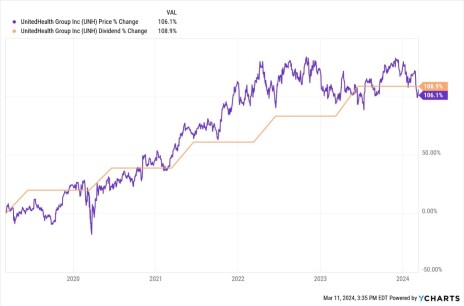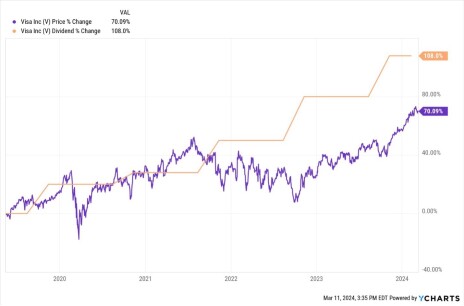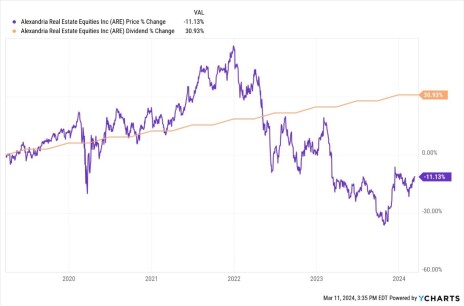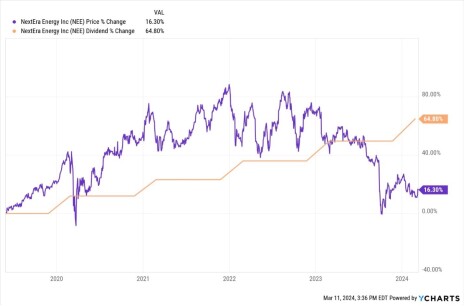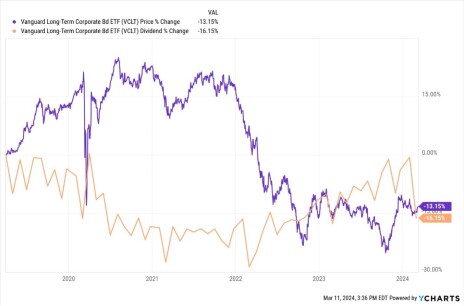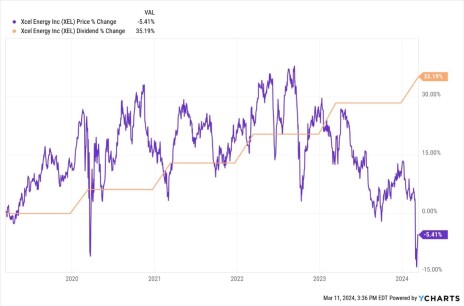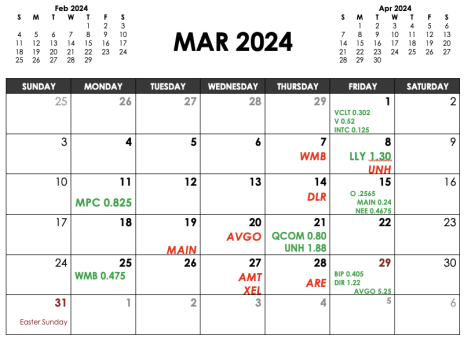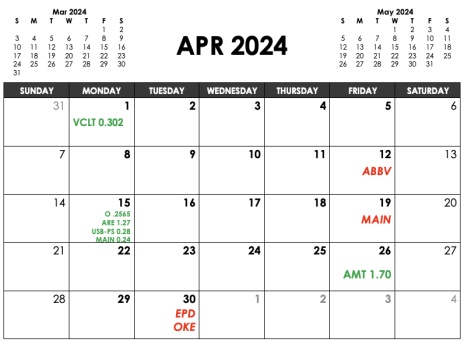Earn a Great Income and Return by Investing Like the Wealthy
“The rich get richer; I like it that way.” J.R. Ewing
J.R. Ewing is a fictional TV character from the 1980s soap opera series Dallas. In case you’re not familiar, J.R. was a wealthy oil baron, unapologetically ruthless to an absurd degree. The above utterance typifies his cavalier attitude toward wealth inequality.
The line is so good in terms of dramatic effect and humor because it strikes a nerve. It’s a twisted derivation of the universally known American cliché, “The rich get richer, and the poor get poorer,” the origin of which is often attributed the hit 1920s song Ain’t We Got Fun.
But some version of the saying likely goes back much further. In fact, the sentiment behind it has been prevalent since the beginning of civilization. Historically, the distribution of wealth in the world has been grossly inequitable. A precious few people have controlled most of the wealth while the vast multitudes had practically nothing. Resentment of that situation has always been quite common.
But resentment is a waste of energy. Instead of resenting the uber-rich, we can learn from them. Don’t get mad, get rich. Let’s adopt some of that “get richer” mojo for ourselves.
Why do the rich get richer? There are a lot of reasons why it’s easier to make money if you already have money. But let’s just focus on the fact that wealth provides access to opportunities and investments that most of us don’t have.
Venture capital is a typical example of such privileged access. Venture capital, or private equity, is money provided to young and growing businesses that otherwise wouldn’t have access to sufficient capital. This money is typically lent at very high rates of interest and/or in exchange for equity stakes, a percentage of ownership.
Growing businesses with big ambitions need large amounts of money to grow and expand to the next level. But these enterprises can’t get the necessary capital from stodgy and risk-averse bankers. And they are still too small to access the capital markets by issuing stock or bonds. Thus, they are forced into the domain of wealthy individuals and institutions that have money and are itching to reap high returns.
These venture capitalists provide desperately needed money to up-and-coming businesses that can’t get it anywhere else. Thus, they are in a position to negotiate very favorable terms for themselves.
For those who possess, or have resources to hire, the expertise to successfully evaluate the most promising companies and their growth prospects, money invested in this way can generate fantastic returns. A great case in point is the asset management firm The Caryle Group.
It’s a firm that specializes in private equity. Founded in 1987, they were one of the first major firms on the block to specialize in this kind of investing and were able to generate massive average returns of over 30% per year for many years. But there was a catch. You had to be very wealthy to invest with them.
The firm only catered to large institutions, pension funds, and very wealthy individuals. It required huge minimum investments and individuals probably had to know somebody to get in. For example, the list of investors included people like ex-presidents and Saudi princes. If you knew the right people, you could turn a measly $5 million or $10 million into something meaningful. The rich got richer.
But times have changed.
As financial markets have grown in sophistication, venture capital investing is no longer the exclusive domain of the wealthy. There is a little-known class of security that enables regular investors to mimic the very same money-making strategies employed by the rich and famous. These securities are called Business Development Companies (BDCs).
In this issue, I highlight one of the most successful BDCs on the market. It pays dividends every single month, has a long and consistent track of raising payouts, and has delivered fantastic total returns.
What to Do Now
The market is in the midst of a great rally. The S&P 500 is up 8% YTD and 25% since late October. The index is also up 44% from the bear market low in 2022. I don’t want to fight the tape while it continues to reward. That’s why so many portfolio positions are BUY rated.
The Fed is done hiking rates, inflation is way down, and the economy is still solid. It looks like we are getting through this Fed rate hiking cycle without much economic pain, at least so far. It is also likely that the Fed will start cutting the Fed Funds rate at some point this year. And massive artificial intelligence investment is providing a huge catalyst for many technology stocks.
Most portfolio stocks are thriving in the current market. Of the 19 current stock positions, 11 are at or near the 52-week high. The best-performing sectors are technology and healthcare, which include: Broadcom (AVGO), Qualcomm (QCOM), Intel (INTC), Digital Realty Trust (DLR), Eli Lilly (LLY), AbbVie Inc, (ABBV), and McKesson (MCK). There has also been very strong performance from Marathon Petroleum Corporation (MPC), Visa (V), and ONEOK (OKE).
There has also been lagging performance in some of the more interest rate-sensitive stock sectors, primarily in REITs and utilities. The most notable laggards are Xcel Energy (XEL), NextEra Energy (NEE), Realty Income (O), and UnitedHealth Group Inc. (UNH).
The overall portfolio is doing very well. And it’s OK to have some stocks that aren’t performing in this environment. A well-diversified portfolio almost always includes some underperforming stocks. Our laggards have excellent long-term track records, the past two years aside. And they are cheap and well-positioned for when the market leadership changes.
In the near term, you are probably better off buying the BUY-rated stocks that have positive momentum. But the underperforming stocks are cheap and likely a good bet for the longer term.
Recent Activity
February 14
AbbVie Inc. (ABBV) - Rating change “HOLD” to “BUY”
March 6
Xcel Energy Inc. (XEL) – Rating change “BUY” to “HOLD”
UnitedHealth Group Inc. (UNH) – Rating change “BUY” to “HOLD”
March 13
Buy Main Street Capital Corporation (MAIN)
Current Allocation | |
| Stocks | 62.5% |
| Fixed Income | 19.5% |
| Cash | 17% |
Featured Action
A BDC is a class of security that is traded on major exchanges in the United States. These publicly traded securities provide the same advantages of any stock. They have daily liquidity and can be purchased or sold at any time during market hours. But BDCs are not ordinary stocks.
Similar to real estate investment trusts and master limited partnerships, BDCs are tax-advantaged investments. Because of the economic desirability of fueling economic expansion, BDCs are granted special tax status. They pay no income tax at the corporate level provided that pay out 90% of net income in the form of dividends.
Accordingly, BDCs typically pay out a much higher level of income than ordinary corporations because money normally lost to taxes is available to fuel higher dividend payments. These securities have other peculiarities as well that are primarily designed to limit risk. For example, they cannot invest more than 25% of assets in any one company and can’t borrow more than they have in equity capital.
BDCs primarily engage in the following activities when they invest in privately held companies:
1. Lend money at high rates of interest.
2. Take a percentage of ownership in the form of equity stakes.
3. Provide an active consultancy role in the management of the company.
A BDC provides stockholders with the ability to retain the liquidity of a publicly held stock while sharing in the benefits of investing in emerging-growth or expansion-stage privately held companies. They are securities that pay a high level of current income or yield and spread out investment risk by diversifying in many different companies.
Unfortunately, most BDCs, like most stocks, lay an egg. The vast majority of BDCs on the market focus on high-interest loans and neglect the equity part. As a result, they trade like high-income stocks that provide a juicy yield but precious little in terms of growth. They’re like owning AT&T (T) or Verizon (VZ) except with a higher yield and less price stability. The yield is great. But over time they tend to provide lame total returns.
But there are a select few that effectively take equity stakes in well-chosen companies. Successful equity stakes provide capital appreciation that can generate strong total returns in addition to the dividends. They can also provide supplemental dividends from realized gains that boost the income. There is only one BDC I know that has done this very successfully over time. And that is this month’s highlighted stock.
Buy Main Street Capital Corporation (MAIN) Yield: 6.3%
Houston, Texas-based Main Street Capital Corporation is a BDC that provides high-interest loans and takes equity stakes in lower-middle-market companies and makes loans to middle-market companies. Main currently has over $7.2 billion of invested capital under management that is diversified through 190 companies in over 30 different industries throughout the United States.
The portfolio at fair value consists of lower-middle-market (53%), private loan debt investments (34%), middle-market debt investments (7%), and other portfolio investments (7%). The average rate received on overall debt is 12.7% with almost 100% of debt being first lien and the majority being senior secured.
There are a few things that make Main Street unique as a BDC. The main thing is the focus on lower-middle-market companies that are underserved not only by traditional lenders but also by other BDCs.
Middle-market companies have annual revenues in the range from $50 million to $1 billion. Lower-middle-market (LMM) companies are at the low end of that range, from $50 million to $150 million. The vast majority of BDCs focus on the larger end of the spectrum. These smaller companies offer far less competition and great opportunities for BDCs with the savvy and know-how to identify the best, most promising companies.
Main is well diversified in 80 different LMM companies. These companies were screened from a large universe of an estimated 190,000-plus such companies in the United States. Main’s average investment in these companies is $22.3 million at cost with the average company investment representing less than 1% of the overall portfolio.
The LMM debt portfolio is composed of 99% first-lien loans with 72% fixed rate and 28% floating rate with an average yield of 12.7% at cost. The other unique aspect of MAIN versus other BDCs is the equity stakes, which few BDCs have and none have them to the extent MAIN does. The equity positions provide dividends (currently an average rate of 6.4%), capital appreciation, and periodic capital gains.
Main current has equity stakes in 28% of the LMM portfolio at cost with an average equity position representing 40% ownership in the company. The equity portfolio has had an overall average of 127% NAV per share growth since the MAIN 2007 IPO. The equity side has been a brilliant complement to the high-interest loan income, providing solid capital appreciation along with several supplemental dividends from realized gains when the stakes are sold. Another advantage is that this small company’s debt and equity tend to have a low correlation to the overall stock and bond markets.
The LMM is complemented by the Private Loan and Middle-Market portfolios. Private loans are general loans made to companies that don’t necessarily fit the LMM and MM categories. These loans are 95% secured and 100% first lien senior debt yield is a current 12.9%. The MM market debt is 91% secured or rated and 99% first lien with an average yield of 12.5%.
How has this LMM market involvement along with high investment income and equity stakes borne out in stock performance?
Since the inception of the VanEck BDC Income ETF (BIZD), the largest BDC ETF on the market, in February of 2013, it has returned 118%. MAIN has more than doubled the return over that period, with 317%. MAIN has also tripled the S&P 500 returns since the 2007 IPO, returning 1,128% versus 347% for the S&P over the same period. It has slightly underperformed the S&P over the past 10- and 5-year periods but outperformed the index over the past three years.
Another unique and distinguishing aspect of the business is that it is internally managed. MAIN provides its own industry-leading expertise in matters of growth/expansion initiatives, buyouts/change of control, recapitalizations, and acquisitions. Most BDCs don’t, and pay out the wazoo for external help.
Main internally manages $5.5 billion of its $7.2 billion of invested assets. That provides a sizable cost advantage. Main’s operating expenses-to-assets ratio is just 1.3% compared to 2.9% for BDCs in general and 2.3% for commercial banks.
The Dividend
As a BDC, MAIN pays no taxes at the corporate level and is required to pay out the bulk of earnings in the form of dividends. A beautiful aspect of this stock is that it pays these dividends every single month. That’s part of what makes MAIN a great income stock. The current regular monthly payout is $0.24 per share which translates to a 6.3% yield at the current price. But wait, there’s more.
Because of realized gains generated by the sale of equity stakes, MAIN often pays out supplemental dividends in addition to the regular payouts, which it has done consistently for several years. In 2022, it paid out four supplemental dividends totaling another $0.36 per share. Last year, it also paid four supplemental dividends in the combined amount of $0.97 per share.
The extra dividends increased the payout from regular dividends of $2.79 per share to $3.76. That’s the difference between a yield at today’s price of 6.1% to a yield of 8.3% counting the supplements. There’s no guarantee that the supplements will continue this year. But there is a good chance.
Is the dividend secure? The company has low debt and a reasonable 74% payout ratio compared to an average of 85% among BDCs. But more impressive is the fact that since its 2007 IPO MAIN has never cut the monthly payout. That includes the periods of the financial crisis and the pandemic. The payout has also grown by an average of 10% per year for the last three years.
Although MAIN is currently selling near the 52-week high, it is still reasonably priced at less than 1.6 times book value and with most other valuation measures below the 5-year average.
Main Street Capital Corporation (MAIN)
Security type: Business Development Company (BDC)
Sector: Asset Management
Price: $46
52-week range: $36.48 - $46.40
Yield: 6.3%
Profile: Main Steet is a BDC that provides custom debt and equity financing to lower-middle-market companies as well as private loans and high-interest loans to middle-market businesses.
Positives
- Lower-middle-market companies provide less competition and more upside.
- Equity stakes provide capital appreciation in the stock and often supplemental dividends.
- The stock has a strong track record, and the high monthly payout is secure.
Risks
- Small companies often have a hard time in recessions.
- Income stock performance tends to struggle during times of rising interest rates.
Main Street Capital Corp. (MAIN)
Next ex-div date: March 19, 2024
Portfolio Recap
High Yield Tier | ||||||||||
| Security (Symbol) | Date Added | Price Added | Div Freq. | Indicated Annual Dividend | Yield On Cost | Price on Close 03/11/24 | Total Return | Current Yield | CDI Opinion | Pos. Size |
| Brookfield Infrastructure Ptnrs. (BIP) | 6.75% | 30 | 47% | 5.40% | BUY | |||||
| Enterprise Product Partners (EPD) | 7.14% | 28 | 46% | 7.10% | BUY | |||||
| ONEOK Inc. (OKE) | 7.47% | 77 | 73% | 5.10% | BUY | |||||
| Realty Income (O) | 53 | 1% | 5.80% | BUY | ||||||
| The Williams Companies, Inc. (WMB) | 8/10/22 | 33 | Qtr. | 1.9 | 5.80% | 37 | 22% | 5.19% | BUY | 1 |
| Current High Yield Tier Totals: | 6.40% | 35.50% | 5.80% | |||||||
Dividend Growth Tier | ||||||||||
| AbbVie (ABBV) | 180 | 193% | 3.48% | BUY | ||||||
| American Tower Corporation (AMT) | 207 | -1% | 3.30% | BUY | ||||||
| Broadcom Inc. (AVGO) | 1293 | 211% | 1.60% | HOLD | ||||||
| Digital Realty Trust, Inc. (DLR) | 145 | 26% | 3.40% | BUY | ||||||
| Eli Lilly and Company (LLY) | 734 | 406% | 0.70% | HOLD | ||||||
| Intel Corporation (INTC) | 45 | 0% | 1.10% | BUY | ||||||
| McKesson Corporation (MCK) | 527 | 16% | 0.50% | BUY | ||||||
| Marathon Petroleum Corp. (MPC) | 181 | 28% | 1.80% | BUY | ||||||
| Qualcomm (QCOM) | 171 | 124% | 1.90% | BUY | ||||||
| UnitedHealth Group Inc. (UNH) | 482 | -5% | 489.00% | HOLD | ||||||
| Visa Inc. (V) | 12/8/21 | 209 | Qtr. | 2.08 | 1.00% | 281 | 37% | 0.74% | HOLD | 1 |
| Current Dividend Growth Tier Totals: | 3.00% | 64.10% | 46.10% | |||||||
Safe Income Tier | ||||||||||
| 127 | 2% | 4.00% | BUY | |||||||
| 58 | 49% | 3.60% | BUY | |||||||
| U.S. Bancorp Depository Shares (USB-PS) | 10/12/22 | 19 | Qtr. | 1.13 | 6.10% | 21 | 20% | 5.40% | BUY | 1 |
| 78 | 3% | BUY | ||||||||
| Xcel Energy (XEL) | 10/1/14 | 31 | Qtr. | 2.08 | 6.70% | 53 | 131% | 4.10% | HOLD | 1 |
| 5.30% | 50.80% | 4.50% | ||||||||
Brookfield Infrastructure Partners (BIP – yield 5.4%) – The inflationary and rising interest rate environment beat up the utility sector over the past couple of years and BIP wasn’t spared. But it is unlikely that rates will continue to move higher. Meanwhile, BIP has some of the most defensive revenues possible. It’s also been expanding into cell towers, data centers and foundries as it is estimated the world needs to invest $1 trillion in digital infrastructure in the next decade. Despite the lousy stock performance, Brookfield continues to deliver strong results. Funds from operations grew 10% for 2023. This stock had blown away S&P returns for every measurable period prior to the past two years. It will rise again. (This security generates a K-1 form at tax time). BUY
Brookfield Infrastructure Partners (BIP)
Next ex-div date: May 30, 2024, est.
Enterprise Product Partners (EPD – yield 7.1%) – Ever so quietly, this midstream energy partnership has returned 8% already this year and is at a new 52-week high after posting solid results for the last two calendar years. Enterprise should deliver solid growth this year with anticipated steady hydrocarbons demand and $3.5 billion in recent growth acquisitions coming online. That massive distribution is extremely well supported, and the stock is still well below the all-time high despite much higher earnings. There is a good chance EPD delivers another solid year in 2024. (This security generates a K-1 form at tax time). BUY
Enterprise Product Partners (EPD)
Next ex-div date: April 30, 2024, est.
ONEOK Inc. (OKE – yield 5.1%) – OKE just hit a new all-time high. This more volatile midstream energy company is delivering double-digit returns already this year after strong returns in the past two calendar years. Unlike most energy companies, OKE has eclipsed the pre-pandemic high and broken out to a new level. Meanwhile, the company is justifying the strong stock performance operationally. ONEOK reported a 42% increase in profits over last year’s quarter on higher LNG volumes and the contributions of the recent Magellan Midstream acquisition. The company also set ambitious guidance for this year. Demand for gas and oil remains solid and the good times should continue. BUY
ONEOK Inc. (OKE)
Next ex-div date: April 30, 2024, est.
Realty Income (O – yield 5.8%) – This legendary income stock has been a disappointment to say the least. It’s still light years below the pre-pandemic high and is actually not far from the pandemic low after stinking up the place for the last two years. Although revenues and profits have remained solid, it just hasn’t overcome the high interest rates. But the REIT is already beaten to a pulp and shouldn’t have much downside from here. And interest rates are highly likely to stop rising and very possibly trending lower in the next year. It’s probably the very late innings of the recent market dynamic and O is well positioned ahead of a likely shift in the future. BUY
Realty Income (O)
Next ex-div date: March 31, 2024, est.
The Williams Companies, Inc. (WMB – yield 5.2%) – The midstream energy company stock performance has been solid but uninspiring. It’s been less volatile than its peers but hasn’t had as much upside in the past few years. That said, WMB is still near the 52-week high while the operational results have been solid. Earnings beat expectations and the company raised guidance for 2024. Recent acquisitions and expansions ensure more solid growth going forward all the way out to 2028 and the high dividend is quite safe. BUY
Williams Companies, Inc. (WMB)
Next ex-div date: June 7, 2024, est.
AbbVie (ABBV – yield 3.5%) – After a subpar year in 2023 when the company suffered steeply falling revenues because of the Humira patent expiration, ABBV is up 13% YTD and 29% since late November. Investors are now looking toward the promising future beyond as management expects moderate earnings growth this year and robust growth next year. Immunology replacement drugs Skyrizi and Rinvoq are expected to generate $16 billion this year (Humira peak sales were $21 billion) and $27 billion in 2027. ABBV has broken out of the old range to a new all-time high as investors are starting to price in the company turning the corner on the way to a bright future. BUY
AbbVie Inc. (ABBV)
Next ex-div date: April 12, 2024
American Tower Corporation (AMT – yield 3.3%) – I like what I’m seeing. AMT had been getting hammered in the first two months of the year after soaring higher the last two months of last year. The interest rate trade reversed, but probably temporarily. But in just the last couple of weeks AMT completely reversed the trend and got back most of this year’s losses. It’s up 11% since the end of February. This is one of the best REITs on the market that deals in very high-quality properties. The cell tower properties will only grow in demand in the years ahead and in any other interest rate environment AMT will sell at a much higher price. BUY
American Tower Corporation (AMT)
Next ex-div date: March 27, 2024, est.
Broadcom Inc. (AVGO – yield 1.6%) Earnings – Finally, there’s a kink in the armor. After doing nothing but rising for most of the past year, AVGO suffered its worst single-day drop in four years when it fell 7% last Friday after reporting disappointing earnings. Despite beating expectations on revenue and earnings, the company reported disappointing semiconductor sales for the quarter. The stock had been up 26% YTD but has fallen 8.1% since the report. The news wasn’t all bad though. Broadcom maintained its full-year guidance for semiconductor sales and artificial intelligence demand grew even faster than expected for the quarter.
The AI catalyst is still raging, which is the primary reason for the stellar recent performance. And the semiconductor business is always volatile from quarter to quarter. But AVGO stock had risen 123% since last May. When a stock is that hot any news that fails to impress will hurt the stock. Minor disappointments like this are normal for stocks, but investors aren’t used to anything but good news from AVGO. They greet anything less harshly. Uninterrupted good news can’t last, and that’s why this stock was rated a HOLD. But a breather is probably healthy and the longer-term trajectory is still solid. HOLD
Broadcom Inc. (AVGO)
Next ex-div date: March 20, 2024
Digital Realty Trust, Inc. (DLR – yield 3.3%) – This hot data center REIT has been bouncier of late but cooled off a little over the past week. DLR is still up 8% YTD after surging 50% at the end of last year. It pulled back a little after earnings disappointed. But the recent surge in AI-related stocks took DLR with it. The data centers will benefit from increasing AI spending, providing Digital with an additional growth catalyst that could last for years. DLR recently made a new 52-week high but is notably still well below the all-time high made at the end of 2021 before the inflation bear market. But earnings and prospects a much better now. BUY
Digital Realty Trust, Inc. (DLR)
Next ex-div date: March 14, 2024
Eli Lilly and Company (LLY – yield 0.7%) – Even the mightiest take a hit once in a while. This poster child of great stock performance that has outperformed most of the “magnificent seven” stocks hit a rare rough patch. The stock price is down about 4.5% since the announcement last week that the FDA decision regarding approval of its high-potential Alzheimer’s drug Donanemab will be delayed. A decision had been expected in the first quarter but will now likely be later in the year.
Everything that propelled the stock higher is still in place, but the decision just got pushed back for a few months. That’s not a game-changer at all. But the stock had been up 32% YTD and 135% over the past year. When the news is always good it creates an illusion of invincibility. Any remotely disappointing news gets an overblown market reaction. It’s hard not to slip from such a high perch. That’s why the stock is rated a HOLD. But the story is still intact and I wouldn’t be surprised if LLY resumes moving ever higher. HOLD
Eli Lilly and Company (LLY)
Next ex-div date: May 15, 2024, est.
Intel Corporation (INTC – yield 1.1%) – The red-hot chipmaker finally cooled off after earnings guidance disappointed and the stock fell from the recent high. But the selling has ended, and INTC has been moving higher over the past couple of weeks along with the other semiconductor and AI stocks. The bounty from the new chips and the foundry business might not come as soon as optimistic investors had been hoping. The future is still bright though. There are great days ahead. Headline risk probably favors the upside for this stock in the months ahead with AI speculation still strong. BUY
Intel Corporation (INTC)
Next ex-div date: May 6, 2024, est.
McKesson Corporation (MCK – yield 0.5%) – The world keeps going on with Fed and interest rate speculation, the rally in technology stocks, and the crazy politics. But MCK just continues to forge quietly higher while no one seems to notice. It’s been making a series of new all-time highs for the last year and just hit another one last week. It’s already up over 12% YTD while investors focus elsewhere. Earnings were stellar with 15% revenue growth and 12% earnings growth and McKesson raised guidance for 2024. The company dominates a market that is growing all by itself because of the aging population. MCK continues to roll forward. It’s been in an uptrend since the pandemic. BUY
McKesson Corporation (MCK)
Next ex-div date: May 31, 2024, est.
Marathon Petroleum Corporation (MPC – yield 1.8%) – This superstar refiner just hit another all-time high this week. MPC is up 18% YTD and 28% since being added to the portfolio in November. The economy is stronger than expected and this refiner stock is shining. Despite a decline from last year’s record revenues, earnings and revenues remain very strong by historical standards. The company is flush with cash from the boom times while robust profits continue to roll in. This stock has consistently outperformed its peers and has been solid even in environments when the overall has energy sector struggled. The stock should continue to thrive unless the economy turns south. BUY
Marathon Petroleum Corporation (MPC)
Next ex-div date: May 20, 2024, est.
Qualcomm Inc. (QCOM – yield 1.9%) – After a terrible year in 2022 and underperformance in most of 2023, QCOM is back. It’s up over 26% YTD and 67% since late October. The recent outperformance of the technology sector is largely because of the recovery in the semiconductor sector. Qualcomm is also introducing new AI chips for PCs and smartphones that could be big sellers this year. Qualcomm is secretly one of the best semiconductor and AI stocks to own. It had been held back by cyclicality, both in semiconductors and smartphones. But the negative cycle is ending, and AI is coming to mobile devices. BUY
Qualcomm Inc. (QCOM)
Next ex-div date: May 31, 2024, est.
UnitedHealth Group Inc. (UNH – yield 1.5%) – This is the only healthcare stock in the portfolio that isn’t killing it. UNH has gone nowhere in the last two years. It had been moving higher but then plunged 9% two weeks, although it has recovered slightly over the past week. The recent downmove was because of a cyber attack on its Change Healthcare unit that is threatening the security of patient information. The hack is also disrupting functions like discharges and prescriptions. It’s sending ripples through the industry as hospitals are struggling with payrolls and delayed approval for patient services. Although these issues will likely prove temporary, the disruption is still ongoing and the extent of the damage is still unknown. UNH is still downgraded to HOLD until there is more clarity on this bizarre issue. HOLD
UnitedHealth Group Inc. (UNH)
Next ex-div date: March 8, 2024
Visa Inc. (V – yield 0.7%) – This payment processing global goliath is thriving. V has been making a series of new highs since early November. It’s still in an uptrend that began in the fall of 2022. V was slow to recover from the pandemic because the global economy lagged. But now it’s making up for lost time. It’s up 8% YTD and will likely continue rising slowly unless and until the economy tanks. Earnings last month beat estimates with upbeat guidance through 2024. HOLD
Visa Inc. (V)
Next ex-div date: May 8, 2024, est.
Alexandria Real Estate Equities, Inc. (ARE – yield 4.0%) – Ditto what I said about recent performance regarding AMT. The life science property REIT had mostly a terrible last two calendar years as interest rates rose and the REIT sector took it on the chin. Alexandria also got lumped in with office REITs, which are suffering from the work-from-home trend with low occupancy rates. But the company provides lab space and related offices aren’t affected. ARE surged far more than its peers in the last two months of last year as the interest rate trade reversed. But it has struggled through most of this year so far as interest rates moved up again amid the stronger economy. Things might be changing though. ARE has broken the recent downtrend and has moved up 12% in the last month. BUY
Alexandria Real Estate Equities, Inc. (ARE)
Next ex-div date: March 27, 2024
NextEra Energy (NEE – yield 3.6%) – The past two years have been awful for this combination regulated and clean energy utility. But it’s cheap with a great long-term track record. NEE had been a superstar performer before inflation and rising interest rates. It provides both safety from its best-in-class regulated utility business and growth from its considerable clean energy business. The utility reported strong earnings that exceeded expectations again last month and reiterated its growth projections for this year. The interest rate-related weakness should at least diminish going forward as rates have likely peaked. BUY
NextEra Energy Inc. (NEE)
Next ex-div date: May 25, 2024, est
USB Depository Shares (USB-PS – yield 5.4%) – The party isn’t over for fixed income. Rates have still peaked and may trend lower for the year. The price has soared from the low of late October and has provided a 20% total return since being added to the portfolio in October of 2022. After the worst two years ever for fixed income, this preferred issue is well positioned for a further rebound. BUY
U.S. Bancorp Depository Shares (USB-PS)
Next ex-div date: April 15, 2024
Vanguard Long-Term Corp. Bd. Index Fund (VCLT – yield 4.9%) – Ditto for VCLT, as evidenced by the recent 20% price surge. This long-term bond fund is very sensitive to interest rates. It held up relatively well in the rising rate environment and now rates may continue to trend lower. If the economic strength lasts, VCLT should remain stable and deliver a strong income. If the economy weakens, and/or rates move lower, there should be more upside for the price. BUY
Vanguard Long-Term Corp. Bd. Index Fd. (VCLT)
Next ex-div date: April 1, 2024, est.
Xcel Energy (XEL – yield 4.1%) – The alternative energy utility has recovered from a terrible week at the end of February and beginning of March. The stock crashed 14% after it was reported that Xcel could be held liable for damages for the raging Texas wildfire, which is the worst in the state’s history and encompasses a land mass larger than the state of Rhode Island. Several utilities have been held liable for wildfires in recent years. The company denies it started the fire but this story is still ongoing. But the extent of the liability and damage to Xcel from this weird development is still not known. NEE remains downgraded to a HOLD until there is more clarity on the matter. HOLD
Xcel Energy Inc. (XEL)
Next ed-div date: March 14, 2023
Dividend Calendar
Ex-Dividend Dates are in RED and italics. Dividend Payments Dates are in GREEN. Confirmed dates are in bold, all other dates are estimated. See the Guide to Cabot Dividend Investor for an explanation of how dates are estimated.
The next Cabot Dividend Investor issue will be published on April 10, 2024.
Copyright © 2024. All rights reserved. Copying or electronic transmission of this information without permission is a violation of copyright law. For the protection of our subscribers, copyright violations will result in immediate termination of all subscriptions without refund. Disclosures: Cabot Wealth Network exists to serve you, our readers. We derive 100% of our revenue, or close to it, from selling subscriptions to our publications. Neither Cabot Wealth Network nor our employees are compensated in any way by the companies whose stocks we recommend or providers of associated financial services. Employees of Cabot Wealth Network may own some of the stocks recommended by our advisory services. Disclaimer: Sources of information are believed to be reliable but they are not guaranteed to be complete or error-free. Recommendations, opinions or suggestions are given with the understanding that subscribers acting on information assume all risks involved. Buy/Sell Recommendations: are made in regular issues, updates, or alerts by email and on the private subscriber website. Subscribers agree to adhere to all terms and conditions which can be found on CabotWealth.com and are subject to change. Violations will result in termination of all subscriptions without refund in addition to any civil and criminal penalties available under the law.
